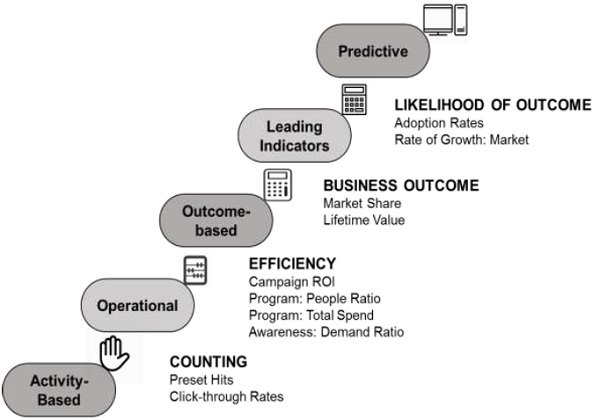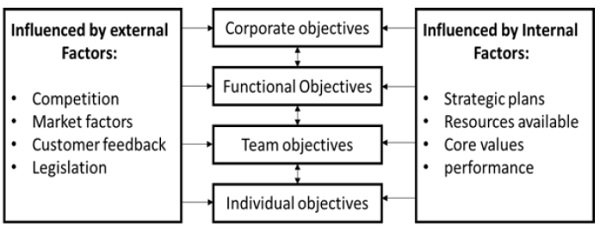Objective Setting
05/03/2020Objectives describe something that has to be accomplished. Objectives or goals define what organizations, functions, departments and individuals are expected to achieve over a period of time. Objective setting those results in an agreement on what the role holder has to achieve is an important part of the performance management processes of defining and managing expectations and forms the point of reference for performance reviews.
Types of Objectives
Let us now understand the different types of objectives and how they are set. The following are the different types of objectives:
Ongoing Role or Work Objectives
All roles have built-in objectives, which may be expressed as key result areas in a role profile. A key result area shows us what the role holder is expected to achieve in this particular aspect of the role.
For example: ‘Identify database requirements for all projects that require data management in order to meet the needs of internal customers’ or ‘Deal quickly with customer queries in order to create and maintain high levels of satisfaction.’
A key result area statement should contain an indication of not only what has to be done but also why it has to be done. The ‘why’ part clarifies the ongoing objective but it may be necessary to expand that by reaching agreement on a performance standard that describes what good performance will look like.
A performance standard definition should take the form of a statement that performance will be up to standard if a desirable, specified and observable result happens. It should preferably be quantified in terms, for example, of level of service or speed of response.

Targets
Targets are objectives that define the quantifiable results to be attained as measured in terms such as output, throughput, income, sales, and levels of service delivery, cost reduction and reduction of reject rates. Thus, a customer service target could be to respond to 90 per cent of queries within two working days.
Tasks/projects
Objectives can be set for the completion of tasks or projects by a specified date or to achieve an interim result. A target for a database administrator could be to develop a new database to meet the need of the HR department by the end of the year.
Behavioral Expectations
Behavioral expectations are often set out generally in competency frameworks but they may also be defined individually under the framework headings. Competency frameworks may deal with areas of behavior associated with core values, for example, teamwork, but they often convert the aspirations contained in value statements into more specific examples of desirable and undesirable behavior, which can help in planning and reviewing performance.

Values
Expectations can be defined for upholding the core values of the organization. The aim would be to ensure that espoused values become values in use.
Performance Improvement
Performance improvement objectives define what needs to be done to achieve better results. They may be expressed in a performance improvement plan, which specifies what actions need to be taken by role holders and their managers.
Developmental/learning
Developmental or learning objectives specify areas for personal development and learning in the shape of enhanced knowledge and skills (abilities and competences).
Integrating the Objectives
A defining characteristic of performance management is the importance attached to the integration or alignment of individual objectives with organizational objectives. The aim is to focus people on doing the right things in order to achieve a shared understanding of performance requirements throughout the organization.
The integration of organizational and individual and team objectives is often referred to as a process of ‘cascading objectives’. However, cascading should not be regarded as just a top-down process.
There will be overarching corporate goals, but people at each level should be given the opportunity to indicate how they believe they can contribute to the attainment of team and departmental objectives. The views of employees towards organization about what they believe they can achieve and they should also take account of them.
There will be times when the overriding challenge has to be accepted, but there will also be many occasions when the opinions of those who have to do the work will be well worth listening to.
Integration of objectives is achieved by ensuring that everyone is aware of corporate, functional and team goals and that the objectives they agree for themselves are consistent with those goals and will contribute in specified ways to their achievement. This process is illustrated in the following figure.
